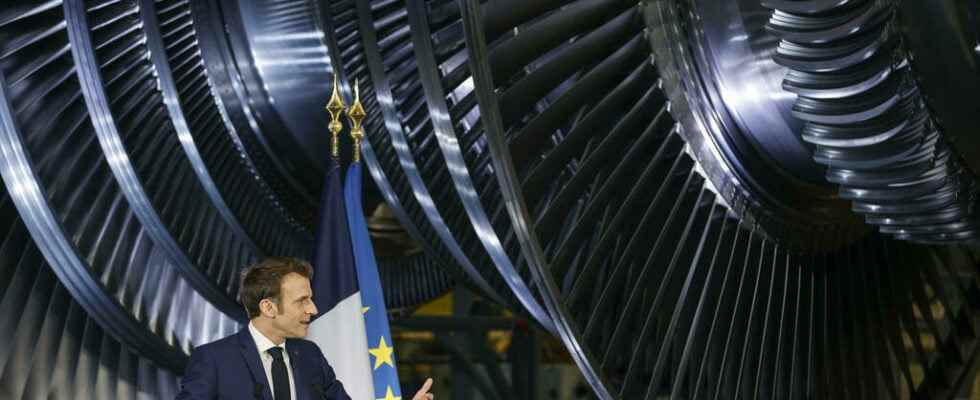Eight weeks before the presidential election, Emmanuel Macron presented this Thursday, February 10, his energy strategy for the next thirty years. From Belfort, in the east of the country, the President of the Republic has decided to put nuclear power more than ever at the heart of his policy, the only way to ensure France’s energy independence according to him.
French President Emmanuel Macron announced on Thursday a vast nuclear recovery plan, with the objective of building six new second-generation EPRs for 2050, and studying the construction of eight additional reactors.
Another announcement, he wants extend all reactors that can be extended “, beyond 50 years if possible, and avoid closing them, a volte-face compared to the objectives of 2018 to close a dozen.
” I would like six EPR 2s to be built and for us to launch studies on the construction of eight additional EPR 2s. In concrete terms, we are going to start the preparatory work in the weeks to come. A broad public consultation will take place in the second half of 2022 on energy, followed by parliamentary discussionsdeclared the President of the Republic. We are aiming for the start of construction by 2028 for the commissioning of the first reactor by 2035. This implementation deadline also justifies the need to extend our current reactors and develop renewable energies.. »
►To listen: Emmanuel Macron unveils his nuclear energy recovery plan, “a thoughtful strategy”
” I made two strong decisions: to extend all the nuclear reactors that can be extended, without giving up anything on safety ” and ” that no nuclear reactor in a state of production should be closed in the future (…) except for safety reasons “, declared the Head of State in Belfort, specifying that he had asked the French electrician EDF “ to study the conditions of extension beyond 50 years “.
For new reactors, we will proceed step by step “, he explained, with the commissioning of the first EPR 2 around 2035. The sector will have to develop small modular reactors (SMR) and reactors “ innovative » producing less waste.
Resume the “ great adventure » Civil nuclear
In total, these very long-term decisions should lead to the commissioning of “ 25 gigawatts of new nuclear capacity by 2050 “, a “ revolution” justified by the increase in electricity needs.
This will be a clear increase compared to the approximately 61 GW of the current French nuclear fleet, while the multi-annual energy programming law of 2020 provided for the closure of a dozen of the oldest reactors.
“ We must pick up the thread of the great civil nuclear adventure in France “, he launched, ironically on his opponents who “ say we don’t need nuclear power “.
” The past decade has been marked by international doubt about nuclear power, a period of glaciation obviously following to the terrible event in Fukushima “, he acknowledged. ” Some nations have made radical choices in this period to turn their backs on nuclear power. France did not make this choice, it resisted but it did not reinvest because this doubt was there. »
►To go further: Emmanuel Macron in Belfort to announce a nuclear recovery plan
But now, “ there is a break in time », « the conditions are now in place for the nuclear renaissance “.
Fifty offshore wind farms
” EDF, a sovereign company, will build and operate the new EPRs. It will be able to count on the support of the State to carry out this project on a scale unequaled for 40 years in good financial and operational conditions. “, he concluded, promising to unlock “ several tens of billions of euros “.
Anxious to show the importance he attaches to renewable energies, the President also announces the creation of 50 offshore wind farms and a tenfold increase in solar power by 2050!
Get out of fossil fuels, but also increase France’s energy independence by producing its own electricity and the industrial means to produce it. This is the symbolism of this speech delivered in Belfort, a major steel region.
Another more political symbol: the presence alongside the president of Jean-Pierre Chevènement, the last minister to have launched the construction of a nuclear power plant and a major figure on the French left.
With AFP
